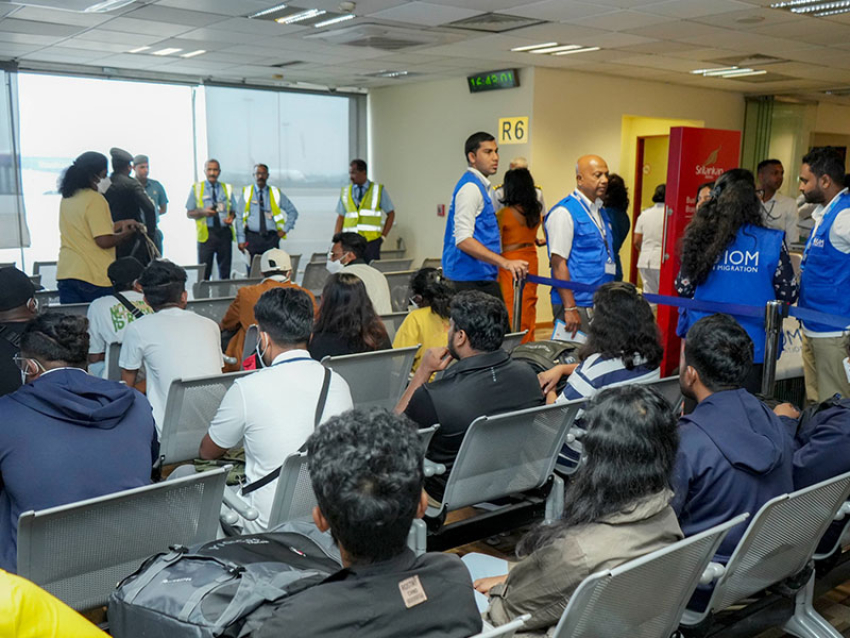India train collision: Lucky escape for passengers in Hyderabad
Hundreds of passengers had a lucky escape after two trains collided head-on in the southern Indian cityof Hyderabad.Twelve passengers suffered minor injuries and are being treated at a local hospital.An inquiry has been ordered into the incident.India has one of the largest train networks in the world but accidents are fairly common because much of the railway equipment is out of date.The government has promised to modernise the network but the pace of the change has been slow.
Man hit by train in quest for perfect selfie
By Victoria Park
BBC UGC and Social News
25 January 2018
Share this with Facebook Share this with Messenger Share this with Twitter Share this with Email Share
Media captionVideo showing the train and Mr Siva prior to the accident
A self-filmed video of a man who was hit by a Multi-Modal Transport System (MMTS) train in Hyderabad, India, has been viewed thousands of times online.
Gym trainer T Siva ignored warnings from a person nearby and the train driver while filming near Borabanda railway station on 21 January.
Mr Siva survived but has suffered head injuries, according to South Central Railways Police.
He has appeared in court and been fined 500 rupees ($7.87, £5.50).
You might also like:
India Mumbai identifies 'no selfie' zones after woman dies
'Mum's WhatsApp messages are crashing my phone'
Priyanka Chopra sparks Twitter search for most unread emails
The 21-second-long video was shared thousands of times on Facebook on Wednesday. In it, Mr Siva is seen standing in the foreground as an MMTS train approaches.
There is an audible warning from a person nearby and a repeated horn blaring from the train. Mr Siva does not move and continues filming, saying "one minute".
The train strikes him on the right side of his head and body and the phone falls to the ground.
Taking a video while standing in front of a fast-approaching train is a deadly trend in India.
In October 2017 three teenagers were run over by a train while trying to take a selfie in Karnataka state, and two teenagers were killed while taking selfies on railway tracks in Delhi.
Image copyrightASIF SAUD
Image caption
A local man points to the spot where three students were run over by a train while taking a selfie in Karnataka
Experts say youngsters obsessed with social media are going to extreme lengths in the quest for reckless selfies. Many cases involve young men.
The majority of selfie deaths across the world have taken place in India. Of the 127 global selfie deaths researchers identified between March 2014 and September 2016, 76 occurred in India and most of the victims were reported to be young people, according to US PhD student Hemank Lamba and his team at Carnegie Mellon University in Pittsburgh.
In India, most selfie deaths are related to trains, which Mr Lamba said was due to "the belief that posing on or next to train tracks with their best friend is regarded as romantic and a sign of never-ending friendship."
Many people on Twitter sharing the video have called Mr Siva's actions "shocking," "crazy," or "risky".
"The person persisted with his attempt to take a selfie, due to which he was hit by the speeding MMTS train and fell down by the side of the track and sustained a head injury," a spokesperson for South Central Railway of India told the BBC.
"The person was also booked under the Railways Act by the Railway Protection Force. Any act of taking selfies and photographs by trespassing on the railway tracks and premises and on trains will entail punishment under section 147 of the Railways Act, 1989."
Disheartened by the accidents happened due to selfies and stunts in the last few days. Urge all of you to not to risk your lives, instead, channelise our energy in more productive areas and help in building a New India.
India engineless train rolls back for miles
9 April 2018
Share this with Facebook Share this with Messenger Share this with Twitter Share this with Email Share
Media captionThe engineless train sped backwards for seven miles
Seven employees have been suspended after 22 carriages carrying 1,000 passengers detached from a train and sped backwards for 11km (seven miles) in the eastern Indian state of Orissa.
The runaway carriages were halted by railway staff after they placed rocks on the tracks.
None of the people on the train were injured in the incident, which occurred on Saturday night, officials said.
More than 22 million Indians commute daily on about 9,000 trains.
A video of the incident, caught on a mobile phone camera, showed onlookers screaming as the carriages rolled backwards and past a railway platform.
The suspended employees allegedly did not follow protocol and an investigation has been launched, JP Mishra, a spokesman for the railway ministry, told AFP news agency.
Officials believe that the brakes that are normally applied when a carriage is detached were incorrectly used or overlooked.
"Something ghastly could have happened and it was averted by alert staff," Mr Mishra said.
Such incidents are not uncommon in India. Across the country, trains carry more than 22 million passengers every day but much of the equipment is out of date.
Last November, a group of Indian farmers woke up to find that the train they were travelling on had sped 160km (99 miles) in the "wrong direction". In August 2017, at least 23 people were killed when a train derailed in the northern state of Uttar Pradesh.
India train crash in Uttar Pradesh leaves 23 dead
Carriages piled on top of each other after coming off the rails
At least 23 people were killed and more than 60 injured when a train derailed in the northern Indian state of Uttar Pradesh.Police said that at least eight carriages jumped the tracks near Muzaffarnagar, about 130km (80 miles) north of the capital Delhi.The cause of the crash, which happened on Saturday evening, is not yet clearRescuers worked into the night to find survivors. TV footage showed carriages piled on top of one another.The train had been travelling to the Hindu holy city of Haridwar, in the foothills of the Himalayas, from Puri, in eastern Odisha state."We are struggling to pull out the injured and are waiting for gas cutters to arrive," said police officer Ajay Pandey at the scene."It's too dark to launch a fully fledged search operation but our teams are trying their best."
Indian Prime Minister Narendra Modi tweeted his condolences to families of the victims and pledged all possible assistance.Train accidents are fairly common in India. The railway system carries more than 22 million passengers a day and much of the equipment is out of date.An accident in Uttar Pradesh last November killed 150 people and another in the same state a year before killed 39.
India train travels 160km in 'wrong direction'
23 November 2017
Share this with Facebook Share this with Messenger Share this with Twitter Share this with Email Share
Image copyrightGETTY IMAGES
Image caption
India runs 11,000 trains every day, of which 7,000 are passenger trains
A group of Indian farmers say they woke up shocked to find that the train they were travelling on had sped 160km (99 miles) in the "wrong direction".
About 1,500 farmers were travelling overnight to the western state of Maharashtra after taking part in a protest rally in Delhi.
But several hours into their journey, the group realised that the chartered train was not following the agreed route.
The railway firm denies the allegation.
The farmers said that the train was due to reach Maharashtra via Uttar Pradesh, Rajasthan and Gujarat states, but the route had been changed without their knowledge.
"We started the journey at 10pm on Tuesday and reached Mathura in Uttar Pradesh state past midnight. At around 4am, we realised that the train had reached the central state of Madhya Pradesh, which wasn't on our agreed route," Sagar Shambhushete, who was on the train, told the BBC.
Mr Shambhushete said they stopped the train and started protesting at a small station called Banmore in Madhya Pradesh.
"Our lives were at risk. The train was on a wrong route, an accident could have happened. We agreed to get back on the train after the railway authorities promised us that we were safe," he said.
But railway officials say the farmers' safety was never at risk.
"Special trains are run through a route which is conveniently available to the railway operation. The passengers might have felt confused because of the different route used in their return journey. There was no negligence and diversion," the railways said in a statement.
But this is not the only time Indian trains have ended up at unexpected destinations. Here are a few more instances.
The engine that ran away
One railway engine made a break for it in the southern Indian state of Karnataka last week and managed to make it 13km (eight miles) before its panicked driver, who had been chasing it on a motorcycle, finally caught up with it.
Newspaper reports said that the "dramatic chase" ended when the train, which had been moving at a speed of about 30km/h finally slowed down.
It is unclear how the train started moving on its own, but reports said it had been uncoupled from a passenger train and had been stationary on the tracks when the driver got off. Fortunately an accident was averted thanks to quick thinking officials who notified stations ahead to stop trains coming in the opposite direction.
An inquiry has been ordered into the incident.
Holy shock
A group of about 1,000 furious pilgrims, who were travelling to the northern Indian city of Varanasi from the southern city of Tirupati in 2011, suddenly found themselves at a station 260km away from where they were supposed to be.
Railway officials were only alerted to the error when the passengers stormed the station master's office in Kazipet in the southern state of Andhra Pradesh, demanding an explanation.
The train was routed back to Vijayawada, where the mistake had taken place, so that it could be rerouted to its original path.
Passengers said that although the journey had been "harrowing" they were relieved that the train route was corrected, and they did not collide with any other trains while travelling for so long in the wrong direction.




















